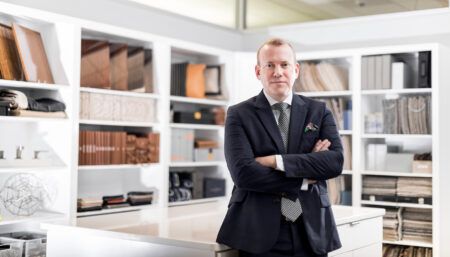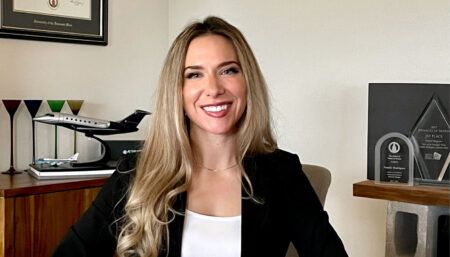Seymourpowell has unveiled a concept that reimagines the future of first class air travel. The First Spaces project has been nominated for a Crystal Cabin Award at Aircraft Interiors Expo, held in Hamburg, Germany, on April 5-7, 2016.
“We’ve long been considering ways to create aircraft interiors that can adapt more to suit the needs of passengers and add flexibility to the business models of airlines,” said Jeremy White, head of transport at Seymourpowell. “We’ve previously developed Morph, an economy seat that allows passengers to buy more or less space depending on their needs, and Flex, a configurable business seat that allows airlines to optimize the cabin layout for passengers. With First Spaces we’re excited to have extended this thinking into the first-class section of an A380.”
Seymourpowell says its research with first-class passengers revealed a clear market for a very high-end premium service. Privacy was cited as passengers’ primary reason for choosing first class, where they will not be bothered, or even seen, by other passengers. The research also highlighted first-class passengers’ desire for discretion, unshared personal space and a faultless experience. In First Spaces, Seymourpowell has addressed these demands, aiming to deliver accommodation that feels like a contemporary boutique hotel, using new technologies to deliver “prescient service” and creating “a new expression of contemporary luxury”.
There are four single rooms and two doubles, the intention being to give passengers a more hotel-like choice, as well as providing a flexible business model for airlines. Double rooms can be sold to solo travelers at a premium, giving them more space, a 42in screen and a bigger, king-size bed (70 x 75in). Doubles can also be sold to travelling couples at a lower cost than two single rooms, introducing a mid-price tier. As well as flat beds and large screens, each room includes storage space for carry-on luggage, hanging space for clothes, drawers for a bespoke amenity kit and small personal belongings, a table that deploys from the window side and a tablet to control room functions.
Seymourpowell has also devised a corresponding approach to service. “Prescient service means anticipating the needs and desires of passengers so that they can be discreetly met before they are even voiced,” said Dick Powell, co-founder of Seymourpowell. “Underpinning this concept is a Smart Inflight Service System (SISS), which draws information from a suite of sensors and references information about each passenger and their preferences to create a dynamic picture of potential passenger needs throughout the flight. This allows staff to be informed and able to respond before they are needed.”
There is a tablet in each First Space that passengers can use to make adjustments to seat ergonomics, seat position and lighting, as well as to access IFE, the internet, menus and every aspect of service. Mirroring of tablet and screen removes the need for wired controls. If passengers prefer, they can use their own tablet with the First Spaces app. The seat can be pre-configured to suit the passenger. The seat’s kinematic movement is designed to maintain critical dimensions, irrespective of seat position, automatically once configured.
In terms of aesthetics, the lobby features S curves and horizontally slatted walls. At the rear is a glazed galley, which is transparent to reinforce the staff/passenger eye-contact that Seymourpowell deems critical to the delivery of great service and is also inspired by contemporary restaurants, where food preparation is part of the experience. The pared-back palette of the rooms is designed to offer a calm ambience, enabling the use of contrasting throws and cushions.
“This project has been a great challenge to work on,” said Powell. “Lead times for new aircraft and their expected service life are so long that we’ve had to think well beyond fashion and style trends and instead understand how new technologies might enable change, and how passengers’ future needs and expectations will evolve. First Spaces is the product of all of our research, insights and design work and we can’t wait to see how it might shape the future of first class air travel.”
April 6, 2016




